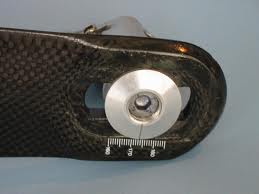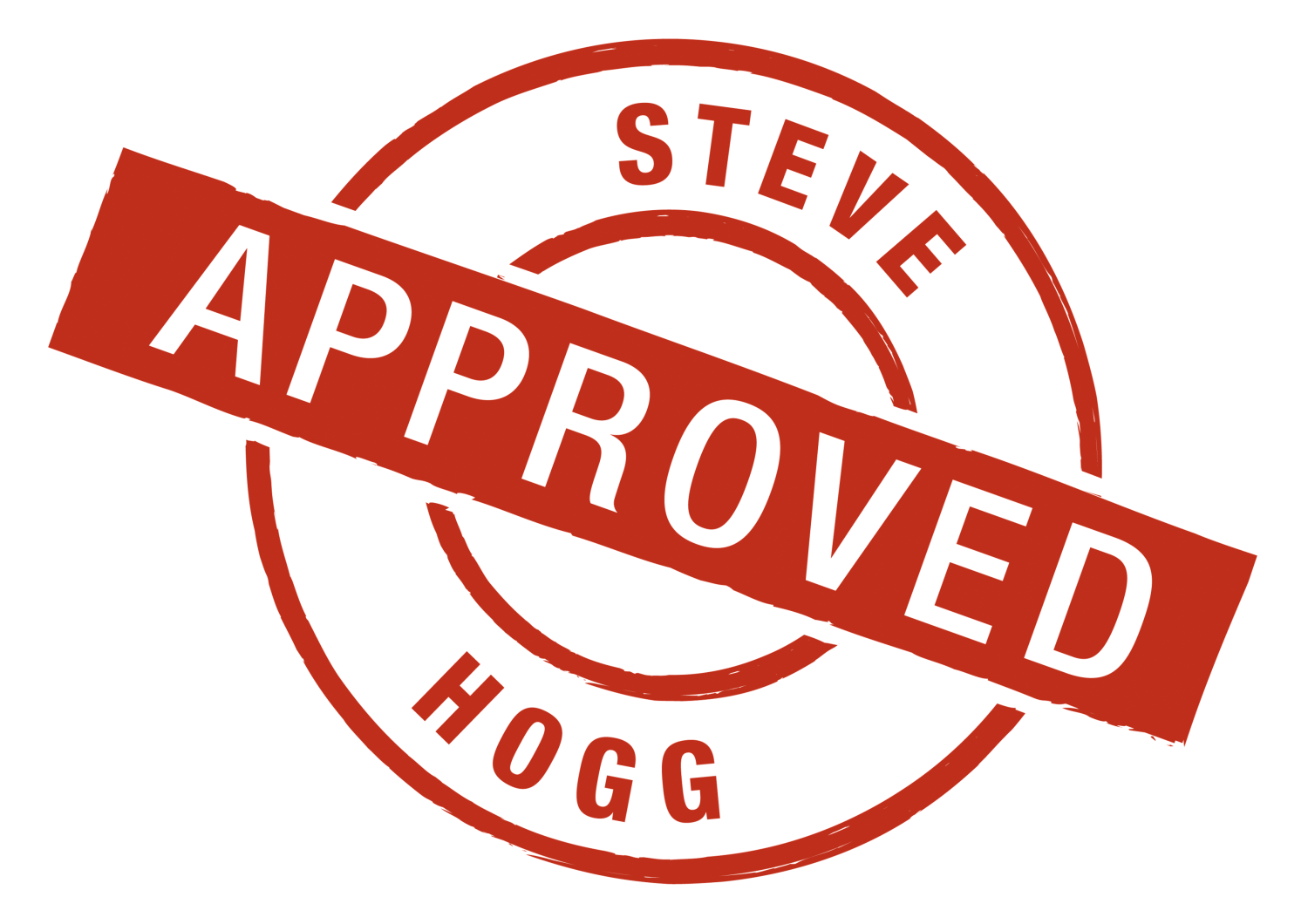This is a heavily revised version of an article I wrote for Bicycling Australia magazine in 2006
SHOULD CRANK LENGTH BE PROPORTIONAL TO LEG LENGTH?
The issue of ideal crank length for a given rider and intended usage is a vexed one and the subject of endless debate. This article will be an attempt to cover the topic but not make specific recommendation as there are too many variables to consider without personal contact. I will cover some of the information available, relate a few personal experiences and mention websites with interesting things to say about crank length for those that would like to pursue the idea further.
The great majority of road riders use cranks lengths between 170 – 175 mm and this has been the case for at least 30 years. Yet people are taller now than they were 30 years ago. One need only walk past a school bus stop to verify that.
Why are we using the same range of crank lengths?
The answer to that is that we probably aren’t. 30 years ago, for road use, 170mm was ‘normal’, 172.5mm was longish and 175mm was considered to be quite a long crank and relatively uncommon. Whereas now 170 is ‘short’ 172.5mm is ‘normal’ and 175 mm cranks are very common. Still though, the difference between 170 mm and 175mm is less than 3% and leg lengths of bike riders vary by far more than that.
There is a school of thought, particularly in the United States, which suggests that crank length should be proportionate to leg length. Some iterations of this idea can be found on www.nettally.com/palmk/crderiva.html and www.myra-simon.com/bike/cranks.html , and there are plenty of others out there. If you want to investigate further, do a Google search for ‘proportional crank length’.
The idea of crank lengths proportional to leg lengths has some merit, particularly for exceptionally short legged or long legged riders. Bicycle frames and handlebar widths depend respectively on the size of the
rider and the breadth of their shoulders so why shouldn’t crank length be the same?
There are some practical considerations. Firstly, the majority of crank manufacturers make a limited range of lengths in road cranks. Campagnolo make between 170 mm and 180mm in 2.5mm increments. Shimano manufacture 165 – 180 mm in 2.5mm increments, and Sram deserve credit for producing cranks from 165mm – 180mm in a variety of price levels. (Shimano and Campag only make 177.5 and 180mm in their most expensive quality level). Most smaller manufacturers only make 3 sizes; 170mm, 172.5mm and 175mm. Special mention should go to French manufacturer T.A. who make cranks ranging from 150mm to 185mm and South African manufacturer Graeme Murray who makes an adjustable carbon crank of reasonable lightness.(see pic)
The one pair of Murray’s that I have seen can be adjusted between 130 and 185mm. However, they do have a wider than normal Q factor. But even the Specialites T.A. range of 150 mm to 185mm represents a difference of 35mm from longest to shortest while the range of leg lengths of my adult customers varies by approximately 300mm. So there is a potential case for both longer and shorter cranks than are common
Here are some of the commonly held ideas regarding crank length, particularly in the U.S., along with some personal critiques having experimented with each of them at one time or another.
1. Crank length should be inseam measurement 0.216 (or inseam measurement in inches x 5.48 yields crank length in millimeters – same thing)
I first became aware of this idea from an American friend named Ron Haney. Ron is what I would describe as a positioning theorist and has some original ideas regarding position which I find alternately intriguing and frustrating. Ron is a believer in proportional crank length though he is open to argument about the numbers. If the inseam X 0.216 is applied, then anyone with an inseam of more than 810mm (which is not a long inseam) would need to use a crank of over 175mm. This would cause problems in that Shimano and Campagnolo only make cranks longer than 175mm (177.5 and 180mm) are in their top of the line cranks. Equally, someone of average size like me at 182cm with an 870 mm inseam would need to use a 185mm or similar crank and only T.A. make cranks that long as standard. Anyone much over 6 feet (183cm) is likely to have longer inseam than that again. Custom crank lengths are available in up to 220 mm in 1mm increments from several sources but there is potential for problems when longer than standard cranks are fitted to production frames.
Really long cranks would need bottom bracket drops that are higher (i.e higher from the ground) to have adequate clearance between pedal and ground when pedaling through corners. So realistically, either a custom frame would be necessary for many, OR the entire bike manufacturing industry would have to completely change their approach to frame design. If either happened and contrary to what you might think, this wouldn’t raise the centre of gravity of the bike and rider as a package, as the rider would be no higher from the ground overall. Smaller riders could be closer to the ground as shorter than normal cranks mean that the bottom bracket height and hence standover height of a frame could be reduced while still maintaining adequate pedal to ground clearance around corners. This can only be of advantage to the short legged.
Chainstay length and the clearance between foot and front wheel become potential issues for users of extra long cranks as well. This means that the literal application of inseam x 0.216 opens a large can of worms. That doesn’t mean that it is necessarily wrong, but rather that the long legged rider going down this route would need a custom frame as production frames tend to be designed for the use of 175mm cranks or shorter. Short legged riders wouldn’t necessarily need a custom frame. However some of the issues that can occur with small riders on 700c wheeled bikes, like lack of standover clearance and poor foot to front wheel clearance would be lessened with shorter than conventional cranks if either custom or redesigned production frames were available.
While the idea of proportional crank length has a surface appeal, I am more sympathetic to the idea that any given ratio between crank and leg length shouldn’t be blindly applied. Blind application of ‘general’ information plagues the bike fitting world and this literally applied, would become another example.
There are some other potential considerations:
a. Inseam length and leg length are not the same thing. Inseam is measured from the ground to crotch. Leg length is measured from the ground to the top of the femoral head. Whether there is a consistent ratio between leg length and inseam length I am not sure, and would be surprised if it is the case. My bike fitting experience suggests that individual variations are common in every other aspect of human function and proportion so I don’t expect this matter to be any different. So any formula would have to start with choosing a particular measurement frame of reference.
b. Leg proportions: The longer the lower leg for a given leg length, the higher the knee will rise for a given crank length. This can place practical limits on crank length particularly for riders who have the ability to ride with their handle bars low. Having your upper thigh foul your rib cage when on the drops is not conducive to performing well in the long term.
c. Foot length: Depending on foot size and assuming a middle of the road pedaling technique, the longer the foot relative to leg length, the further the rider can reach to the pedals. This should probably play some part in any equation based on proportions.
d. Flexibility: If a rider is tight in the hamstrings they cannot effectively have as high a seat height as would be possible with more flexible hamstrings. The lower the seat height for a given leg length, the higher the knee will rise for a given crank length.
e. Potential for an increase in knee problems: Longer cranks bring the potential for greater loads on the knee. If the rider has problems with foot/ankle or hip/lower back that set the scene for knee problems (in the sense of the knee being a single plane joint positioned between two multi plane joints the movement of which can dictate the plane of movement at the knee) then longer cranks can sometimes be enough to push that rider over the edge into injury through increasing shear forces on the knee. Note: Shear force is when the upper leg tries to push forward over the top of the tibia and fibula. Too much shear force = pain or injury. A longer crank for a given rider increases shear force disproportionately for the following reason. For sake of argument, assume a change in crank length of 10mm. To maintain the same effective seat height (as measured from centre of pedal hole in crank to top of seat), the seat post will need to be dropped 10mm further into the frame. That will mean however, that the knee will rise 20mm higher at the top of the pedal stroke. 10 mm because of the 10mm longer crank length plus 10mm because of the seat post being dropped in to the frame.
f. A longer lever doesn’t necessarily mean more power: A longer crank length (lever length) increases the multiplication of the muscular force that the rider applies to the pedal than a shorter crank length. However the rider doesn’t get something for nothing other than spending money on cranks. As you read in e. above, the knee will have an increased bend at the top of the pedal stroke with a longer crank length. This in turn means that the longer crank arm must progress further past TDC (top dead centre / 12 o’clock in the pedal stroke) than a shorter crank arm before the rider can apply the same mechanical advantage to it. The best example here I have is a personal one and I don’t pretend an argument for the entire cycling population can be extrapolated from one person’s experience, but it is worthy of mention. During one of my 3 month ‘experiments’ with crank length., I moved from 172.5mm to 185mm as 185mm is very, very close to my inseam x 0.216. to see what happened. At the time my racing was local crits and a monthly time trial on a course which isn’t mountainous but is far from flat. That increase in crank length is 7%. The leverage felt enormous and my PB in TT’s on that hilly course improved as did my hill climbing generally. All of which was great. The story was quite different in fast bunch rides and crit racing though. Never mind ground clearance issues, I worked around those. The problem was high speed. I found that at light load on a trainer I could pedal the 185’s as fast as I could ever pedal the 172.5’s when playing games with maximum cadence (but was more untidy in the process) but pedaling at high load was a different story. My sprint top speed in local crits dropped by 7 km/h and I struggled to ride much above 50 km/h on the flat. As any crit rider knows, there are periods where the rider must be able to sustain high speed (usually desperately trying to hold on to a wheel). and I really struggled with this. Why?
Because I could not apply the extra leverage through as many degrees of crank arc as I could with a shorter crank. Which meant my pedal stroke tended towards ON / OFF / ON / OFF if you follow me. Less smoothness meant less ability to pedal fast under high load and riding a bigger gear didn’t work as this decreased ability to accelerate and I was constantly being gapped when the pressure was on. Torque analysis confirmed this. I went from being a reasonably smooth pedaller at high load with shorter cranks to being a far less smooth pedaller with longer cranks. In the type of racing where there are plentiful changes in speed, this was a large disadvantage when the pressure was really on. Your experience, if you choose to experiment, may well be different to mine, particularly if you are REALLY long legged or your type of riding differs from mine.
2. Femur length in inches should be the same as crank length in cm (alternately, femur length in cm divided by 2.54 equals crank length yields the same result)
This is based around the idea that the upper leg is the major lever when applying force to the pedals and that the lower leg is the connecting rod and plays little part. I would agree in a general sense but don’t think the pedaling action is that simple. Without going into the merits of this statement, the practical consideration is how to accurately measure femur length. The only definitive way would be with a CT scan or similar. Femur length can be measured from bony landmarks but you will probably get differing results depending on who measures it as it is relatively easy to make mistakes with this method.
The idea of femur length being a determining factor sits better with me than inseam length as it reduces the chances of the upper leg fouling the ribcage, but even so, flexibility, foot length and bar height and intended useage should play a part in your crank length choice to some degree.
3. Various tables, with often conflicting recommendations of crank length to leg length
If you want to really search around, there is a lot of this stuff out there. Some of it is in cycling books, some of it from crank manufacturers and so on. The problem is that many disagree and give wildly differing recommendations leaving the reader no better off.
I have seen successful elite riders effectively use various proportional crank lengths from Eddie Salas using 170 mm for his 790mm inseam (very close to the American idea of 0.216 of inseam length) to now retired Sydney A grader Ben Litchfields’ 172.5mm for his 950mm inseam ( 0.182 of inseam length) so what practical advice can I offer?
If you can’t raise your seat height without struggling at the bottom of the pedal stroke but have clearance issues between rib cage and upper leg when riding in the drop bars then your cranks are probably too long. Conversely, if you have no problems at either end of the pedal stroke then I won’t say that you need longer cranks, just that you have room to experiment.
Experimenting is not as easy as it should be because of the cost of changing cranks. Adjustable length cranks are available in length that range up to 220 mm and custom length cranks can be made in 1mm increments up to 220 mm that I am aware of for those that are interested enough to pursue it. I have one customer using 200mm cranks but as he has a 980mm inseam, this is a reasonably conservative length for the use he puts them too. On a personal level, I have an inseam of 870and a shoe size of 44. I own 165, 167.5, 170, 172.5, 175, 177.5, 180 and 185mm cranks and have used them all for at least 3 months at a time exclusively. So plenty of habituation time. I am flexible enough to cope with all of them but keep coming back to 172.5’s as the best all round compromise for me and what I do on a bike. I must caution though, that my experience is an individual one and I would not attempt to extrapolate a recommendation from that experience and apply it to the cycling population.
I’ve seen thousands of fit clients over many years and a couple of observations have come out of that.
1. Shorter legged riders can cope comfortably with a proportionally longer crank ( crank length relative to leg length, femur length or any other metric) than longer legged riders. There are exceptions but this seems to be the general rule and the probable reason for it is as follows.
Get two people, one very tall with an inseam length of 1000 mm and another who is much shorter and has an inseam of 800 mm. With the 200 mm difference in inseam length they will likely have large differences in arm length as well. Now ask both to perform jumping jacks as fast as possible with arms and legs as straight and extended as is comfortably possible. The shorter person will be able to perform more repetitions in a given time frame than the taller person because they have lighter and shorter limbs that have to move a shorter distance at the periphery (feet and hands) to complete the movement. The longer and heavier a lever (arm or leg) gets, the disproportionally greater degree of effort needed to control it through the same angular range of motion when compared to a shorter lever.
The example above is narrow in focus. It only concentrates on inseam length and crank length. In reality, while the general rule of shorter legged people tending to cope easily with proportionally longer cranks than longer legged people for performance cycling, the individual picture is not so clear. There are too many other factors involved. Differences between riders in flexibility, intended usage, neuromuscular efficiency, cardiovascular efficiency, strength and many more factors conspire to muddy the waters, but generally speaking the ‘rule’ holds true.
,All of us can pedal any crank length we like at some level. To ride ‘well’ means that the rider can push a big gear when they choose or pedal fluently at higher rpm when they choose (relative to their functional condition). Longer legged riders cope less well. That doesn’t mean that there is not a case for cranks longer than 180mm for really long legged riders, just that if there is any basis to determining an optimal crank length for performance cycling by an equation based on limb proportions (and I doubt that there is, as a general rule that can be applied widely), then it would have to have quite a bit of variance in it.
2. A longer crank does not necessarily mean more performance as my own experience related above attests. It is easy to fall into the trap that “Longer crank length = more leverage = more performance” As the song goes “It ain’t necessarily so”. To explain this further I need to explain the relationship between torque and power. Pressure on the pedal x crank length = torque. Torque x rpm = power. In my case above, I increased crank length by 7% but the gap between larger gears (higher ratios / greater rollouts) is more than 7%. That meant that I could not pedal the gear I would usually pedal under load as fast as I normally could because of the increase in crank length. Also, I could not compensate for this by just riding one cog smaller at the back (harder gear) because the increase in gear ratio was greater than the increase in leverage. My feeling is that the higher the intensity of the efforts required, then the shorter the range of crank lengths that will suit a given rider. More intensity, and particularly changes in intensity, generally means more rpm which is why track riders generally ride shorter cranks than road riders to varying degrees.
So ultimately I can’t give you a recommendation but I do encourage you to experiment. I think most riders are well served with the commonly available range of crank lengths of 165mm to 180mm, though every year we supply custom bikes with shorter than standard cranks and occasionally longer than standard cranks. There is a need for them, but I just don’t think it is as great as the people who believe a simple equation leads to ideal crank length think it is. Humans are more complex than that. Just as setting seat height by inseam x whatever number you choose isn’t accurate across the cycling population and choosing top tube length based on standard tables for torso and arm length isn’t accurate either; the idea that individually optimal crank length is fixed percentage of inseam length / femur length or any other simple metric doesn’t stand up. That doesn’t mean that it won’t work for you and if you are interested, experiment. This is the only way to determine what works best for the individual. What I will say, is that if you are a ‘performance’ rider and after experimentation, if you still cannot make up your mind about which crank length ideal, the shorter choice is almost always the easier one to live with if you get it wrong.
I suspect that other than very long or short legged riders, we all have two effective crank lengths – the one we are used to and the one we should be using. Sometimes, happily, they are the same thing. If you get the chance to play with significant differences in crank length, do so, as it is an interesting exercise. Unless you are potentially prepared to go down the custom frame route there will be limits to what is practical.
So where do you go if you are interested in experimenting with crank length?
Click on these: Zinn Cycles High Sierra Cycles Specialites TA
Find more like this: Bike Fit, Miscellaneous








G’day Steve,
Thinking about crank length, comes into my mind:
-Lance Armstrong (1.77m height, 753mm saddle height from BB) using 175mm cranks. So, quite long ones and he was a high cadence rider.
-Katie Compton (1.68m height, 681mm saddle height from BB) using 175mm cranks…
-Ondrej Sosenka (2m height), now he has the Hour Record, used 190mm cranks. with a gear of 54 x 13 the cadence was quite high.
-Miguel Indurain (1.88m height), also for the Hour Record, used 190mm cranks with a gear of 59 x 13.
I think quite the same, a shorter crank feels more smooth. Why? One reason could be that the shorter the crank, the shorter the horizontal diameter of the cercle, so less body weight distribution front-back (little movements) along the pushing stroke. Everything more stable under you.
But if your technique is a round pedaling (tring to have equal power at each degree of the crank) it doesn’t matter what i wrote above. But, i think it is very hard to achieve this technique.
I think you could have the same power, one riding at 80rpm and another at 100rpm. What to choose? Maybe different flexibility, different muscles tipe, different aerobic capacity will dictate… Anyway, lately looks like all the best pro riders choose high cadence: Lance A, Contador, Cancellara, etc.
Thanks! Ciao 😉
Mircea
G’day Mircea,
My feeling is that there is not a close or predictable relationship between crank length and leg length in either direction. That is some riders will perform better and feel better with proportionally long cranks and others with proportionally short cranks. Everything else I’ve ever found out about how humans relate to bikes has a lot of individual variance so I doubt that the matter of crank length will be any different.
Re your example of 80 rpm versus 100 rpm. At high intensity and for the same power output, (and assuming same bike and same rider) the 80 rpm ‘twin’ would crack first. To produce the same power at different rpms, the lower cadence rider has to produce more torque per pedal stroke and a higher peak torque. This in turn means a higher peak muscular contraction which leads to greater production of fatigue metabolites. There may be individual exceptions, or people who have trained themselves so diligently that they can cope on one day at low rpms and high intensity, but I would be surprised if they could back up for several days in a row.
G’day Steve,
Sorry, i forgot to say in my example above that the one with 80rpm will use a longer crank, and the one with 100rpm a shorter one, thus both having the same power and torque. Now, is it different or the same? Would the 80rpm ‘twin’ crack first?
G’day Mircea,
I don’t know because it is not a realistic example. To ride the same speed which means same power output but at a cadence 20% lower than the other ‘twin’ means using a gear that is 25% higher than the other ‘twin’. At intensity, I can’t see how this can be a real world example. How much longer crank does 80 rpm twin need to turn that 25% harder gear with similar ease?
25% longer is the answer, without even considering issues that arise with range of movement and practicality of even trying to use a crank 25% longer than a real world one.
A brief story about cranks approximately 25% longer than ‘real’ ones. Some years ago one of my customers was a highly ranked triathlete who competed on the circuit in the U.S. and Europe. One year he came back from the U.S. and said “Steve, I’m going to bring my new custom bike around to show you. It will revolutionise cycling”. The athlete was 5’9″ /1.75m and of more or less average proportions. The bike had 26″ wheels, 215mm Bullseye cranks, and from memory a 68 or 70 tooth big chain ring. I rode it up a steep hill near our old business and climbing was incredibly easy other than my knees kept trying to knock my shoulders out of joint. This is with the seat height set for my 3″ / 7.5 cm taller, longer legged body than that of the owner. I was unimpressed and wished him well.
He raced it a couple of times and then tried to sell it because he was slower, much slower, not faster and his back was being hammered by the range of motion he needed to use at the hip and the massive gear he was trying to push at a ridiculously low cadence because that was all that was possible on that bike.
Let’s keep this realistic.
power+crank length?
hi steve
what wld the effect on power be ,particularly @ low crank revs ,if crank length were reduced by a modest amount eg 5mm,please?
many thanks
doug
G’day Doug,
That’s a pretty open question. Let me make the assumption that neither crank length is a problem for the rider to turn efficiently; that is neither is so long as to cause a problem. So a 5mm shorter crank would require a higher muscular effort per pedal stroke to achieve the same output at the same cadence and gear at low cadence because the lever (crank arm) is shorter.
At high cadence it is a different story. It is easier to rev higher smoothly with a shorter crank than a longer crank and really high power outputs occur at high revs. Which is why track riders often ride shorter cranks than they would if they were road riders.
So at low / moderate cadences, a longer lever is better. At high cadences, particularly if they have to be sustained, a shorter lever is better. Some where in there is a compromise and it is up to each rider to arrive at a good compromise.
that’s v clear + helpful ,steve:thanks
d
Hi Steve,
My wife is 152cm and has 172mm cranks on her road bike and I’m wondering whether this is really a good combination for her. Climbing is a real struggle for her as getting the pedal over the top of the stroke is a big effort. Will the smaller cranks and pedaling circles make that much difference?
G’day Alan,
Yes, it will make a marked difference. I don’t know how you’re wife is proportioned, how flexible she is or what her foot length is, but over a year, I would see a number of customers of her stature who I put on cranks from 150 – 160mm long. What I would suggest is that you look for a shop or bike fitter who as an adjustable bike with adjustable length cranks so your wife can trial several sizes so she can settle on what works well for her.
If anyone cares I emailed Graeme Murray and he no longer ships to the US.
Thanks for taking the time Duane.
Hi Steve, excellent topic (as pretty much the rest of your site).
I came across it now that I´m considering moving from 172.5´s to 175´s. I´m a bit like you in that I´m 1.83m high/~86 inseam, I´m 41 i.o., quite flexible and smooth-pedaling even at higher RPMs, no problems with pain or positioning on the bike.
I was wondering if the 2.5mm increment would hurt my performance, and if not, by how much should I drop the saddle to compensate for this?
Just to give a picture, I ride criteriums but also a lot of fast, race-like group week rides with all kinds of climbs. I love to climb (I´m a fair climber for my age/height/build) but I´m considered around here a strong “all-rounder”, in that I can TT, sprint, jump and climb quite OK.
Any ideas on what I should expect with this small change, positive and/or negative (if it´s indeed small by your standards and experience, of course).
Thanks for the help and for the blog/site. Your work is amazing.
Alex
G’day Alex,
Going up from 172.5’s to 175’s won’t make much difference
one way or the other. Just drop your seat 2.5mm and if you want to be really fussy, drop your bars the same amount. Adaptation won’t take long but you will likely find that it takes a few weeks to get your sprint back to where it is now. I’ve experimented with every crank length from 170mm to 185mm extensively and the part of cycling that always seems to take the longest to adapt to is sprinting with a longer crank length.
If the cranks are too long, the sprint never comes back to ‘normal’.